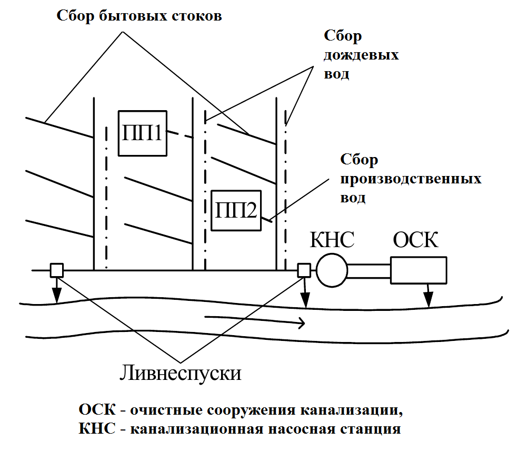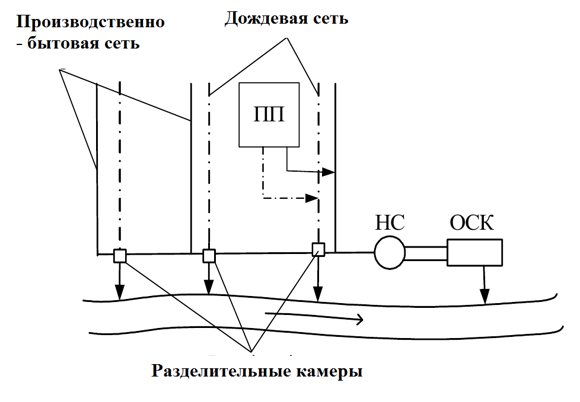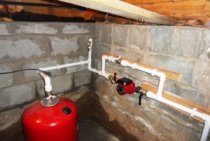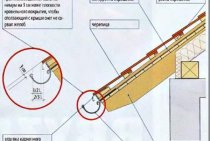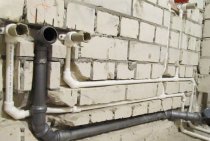Separate sewerage system
If the wastewater network consists of two or more pipelines through which waste of various types is transported, then such a system is called a separate system. In turn, the sewer networks of such a system are divided into two types:
- complete separate;
- incomplete separate.
Systems of the first type are a network of separate underground pipes for domestic, industrial and storm drains, which are transported without mixing to discharge points.
Fig 1 - Complete separate sewer system
In such networks, wastewater from domestic and industrial origin can be treated at municipal wastewater treatment plants together, or immediately enter water bodies after treatment and filtration in the industrial treatment system. A significant problem for such systems is the issue of purification of atmospheric precipitation from pollution. To solve it, local cleaning stations are built in storm sewer networks before being released into a reservoir.
The second option is the arrangement of centralized structures that prevent pollution from entering water bodies. In this case, rainwater enters it through the main storm sewer collector.

Both subsystems are designed with separation chambers.
Alloy sewerage system
The common alloy system consists of a single pipeline through which all types of wastewater - domestic, industrial and rainwater - are removed, after which they are sent to treatment plants. During heavy rains, such systems may overflow. To avoid it, storm drains are designed and organized on the main collector. Through them, part of the wastewater mixture is discharged without treatment into the nearest reservoir.
Fig 3 - Alloy sewerage
The volume of water that is discharged depends on the ability of the reservoir to self-purify and the flow of water in the river. The greater the flow, the more runoff, when the networks are overflowing, is allowed to be discharged into the river without treatment. The permissible volume of wastewater into the reservoir also depends on the placement of storm drains. At those facilities that are located closer to the treatment plants and at the end of the collector, more wastewater is allowed to be discharged.
Combined and semi-separate sewerage systems
A combined drainage and sewerage system is called if the object it serves is equipped with both complete separate and combined systems in its different parts. Such schemes are most often formed in settlements historically, with their growth.
Another system that is often used for arranging sewer networks is called semi-divided. It, like an incomplete separate one, consists of two networks: storm and for transporting domestic and industrial wastewater. But, unlike a separate one, the main collectors are arranged common to all types of water.
Fig 4 - Semi-divided sewerage system
The storm network, before entering the main collector, is equipped with separating chambers that discharge directly into the reservoir with runoff at high precipitation intensity, when the pipeline system and the main collector are overflowing. In this case, some of the rainwater does not go through the treatment process. Purification facilities for industrial waters (design).
| We work throughout Russia | Contacts. Tel/fax + 7(812) 627-93-38; info@dc-region.ru |
- Terms of use
- Personal data processing policy

